By Erin Wilson, Digital Imaging Specialist & Lab Manager, Digital Initiatives
This news update is part of a semi-regular series highlighting recent additions, exhibits, and projects of Ohio University Libraries Digital Initiatives. Read on for a sample of newly digitized materials that are publicly available in our Digital Archives . See previous updates in the unit’s newsletter archive .
Manuscript Collections
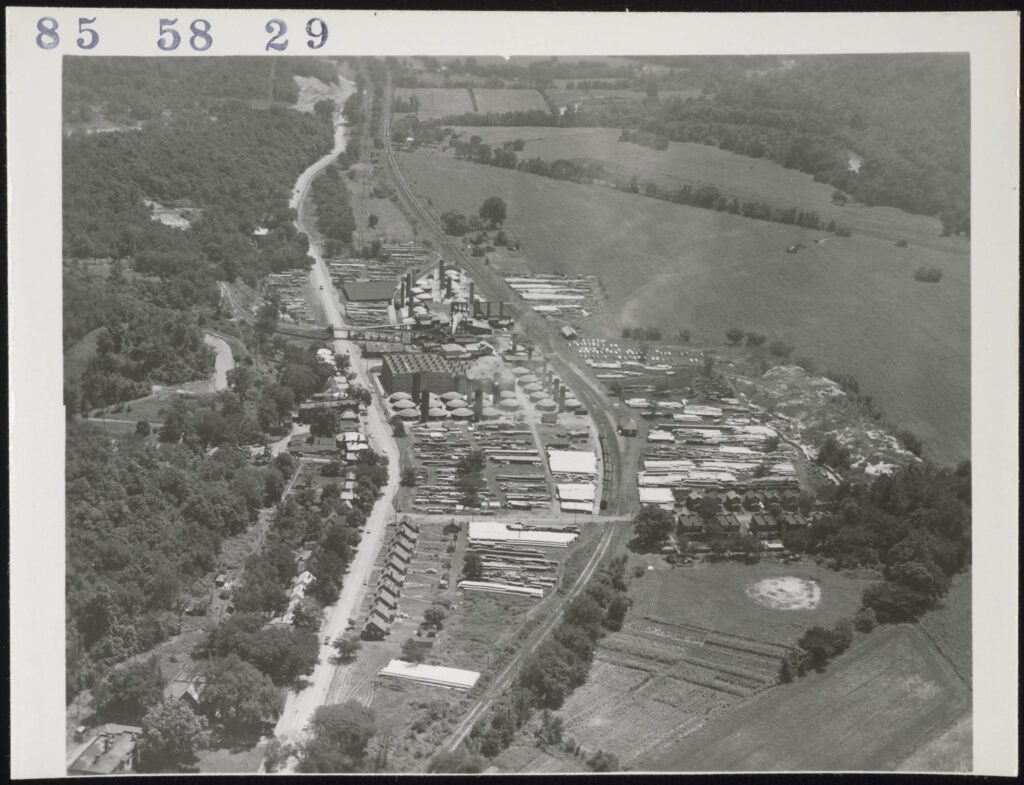
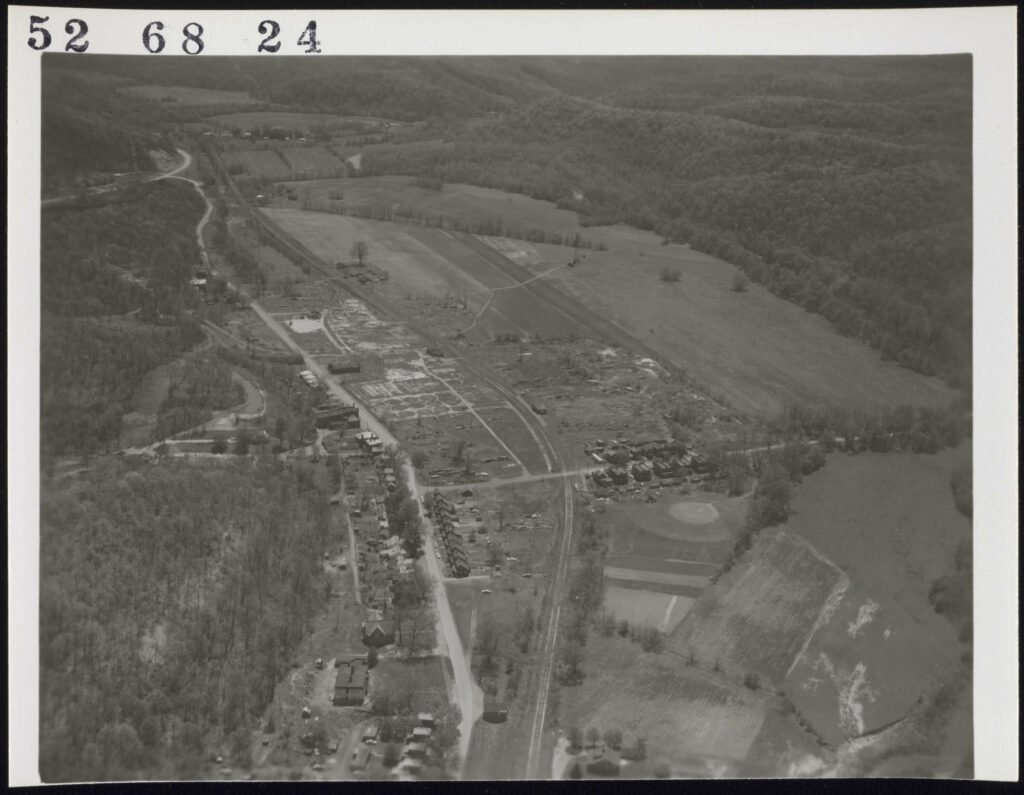
A collection of historical aerial imagery of built features and cities throughout Southeast Ohio is now available to view online in high detail. Photographed by Thomas Root (1923-2019) of Tom Root Air Photography, the collection spans Root’s career as a pilot-photographer with images dating from 1958 to 1988. Locations include Ohio University, downtown Marietta, the Big Muskie strip mine, and other commercial sites, public facilities, and notable infrastructure. Root was formerly employed in the ceramics manufacturing field–an interest reflected in his numerous photos of the brick and clay plants of the region. His images provide valuable documentation of the economic change and development which occurred during this critical time period. In addition to Ohio University’s holdings, Root’s photos form collections at several other institutions throughout the state.
Dance Exhibit and Costume Figurines
Figures of Modern Dance: Alwin Nikolais and Murray Louis is a new digital exhibit which explores the cultural significance of modern dance innovators Alwin Nikolais and Murray Louis. Curated by Digital Initiatives Student Assistant Maddie James (BS ‘24, History and BSVC ’24, Publication Design), the exhibit features materials from the Alwin Nikolais and Murray Louis Papers which document their dance careers and creative work. New additions to the Nikolais/Louis online collection include photos of costume modeling figures which James captured as part of their work on the exhibit. The avant garde costumes were designed and constructed by designer Frank Garcia for works choreographed by Alwin Nikolais.
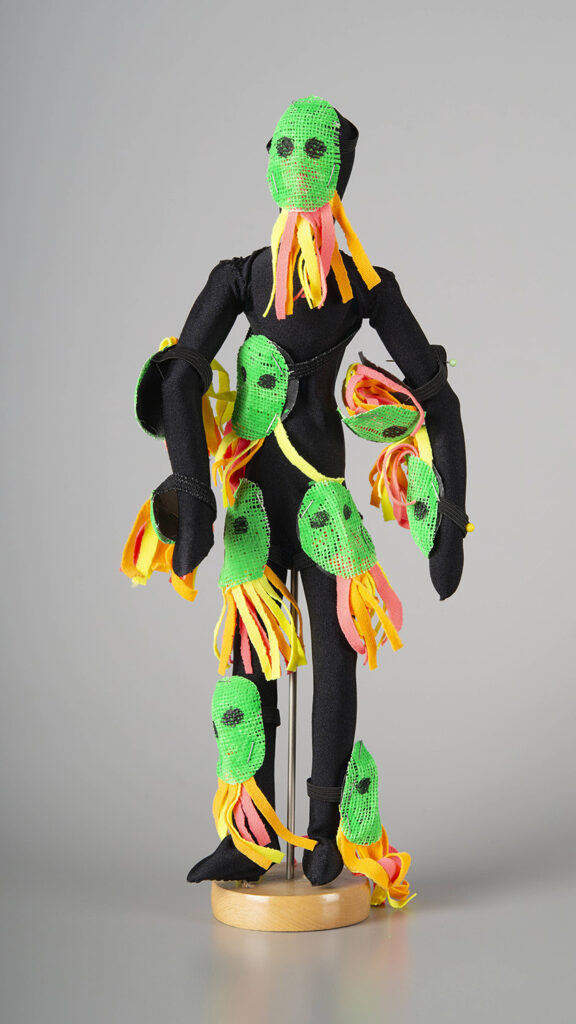
University Archives
The Post Newspaper: New additions & exhibit
With the recent digitization of newspaper issues spanning 1939 to 1960, the online student newspaper collection now contains 100 years of The Post and its predecessor, The Green and White , from 1911-2011. Drawing from stories published during the 1940s, a new virtual exhibit explores Ohio University’s role and response to World War II. Curated by University Archivist and Records Manager, Bill Kimok, the digital display retraces the sequence of events and effects of the war on students, faculty, and the local community as recorded in The Post newspaper. Don’t miss this interactive account of campus life commemorating the 80th anniversary of D-Day.
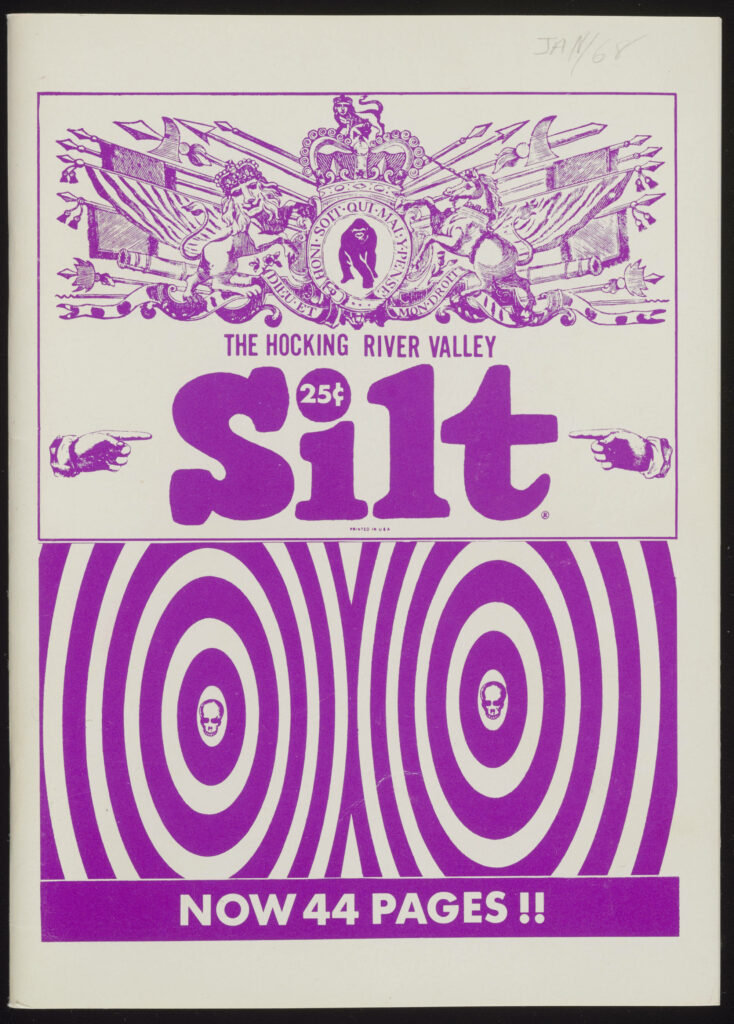
Published during the late 1960s and early 70s, the Hocking River Valley Silt was a satirical magazine that featured fiction, comics, humor and commentary created by Ohio University students. A provocative example of locally-produced counterculture literature, Silt ’s artistic merits included custom-illustrated ads and a high standard for print quality. According to a credo published in the December 1967 issue, Silt was conceived as “a new adventure in student journalistic irresponsibility… We don’t claim to be accurate or fair. We will lie and distort at will—which, unlike other campus publications, we are willing to admit—so the reader must judge us with this fact in mind. And where do we seek our material? Where else but where the secrets of Ohio University lie, in the slime and ooze of The Hocking River Valley SILT.”
Ohio University Archives’ holdings are incomplete, consisting of only 13 now-digitized issues. Readers are advised that this publication contains offensive and violent content.
Special Collections
Specimens of Eastern Manuscripts and Printing

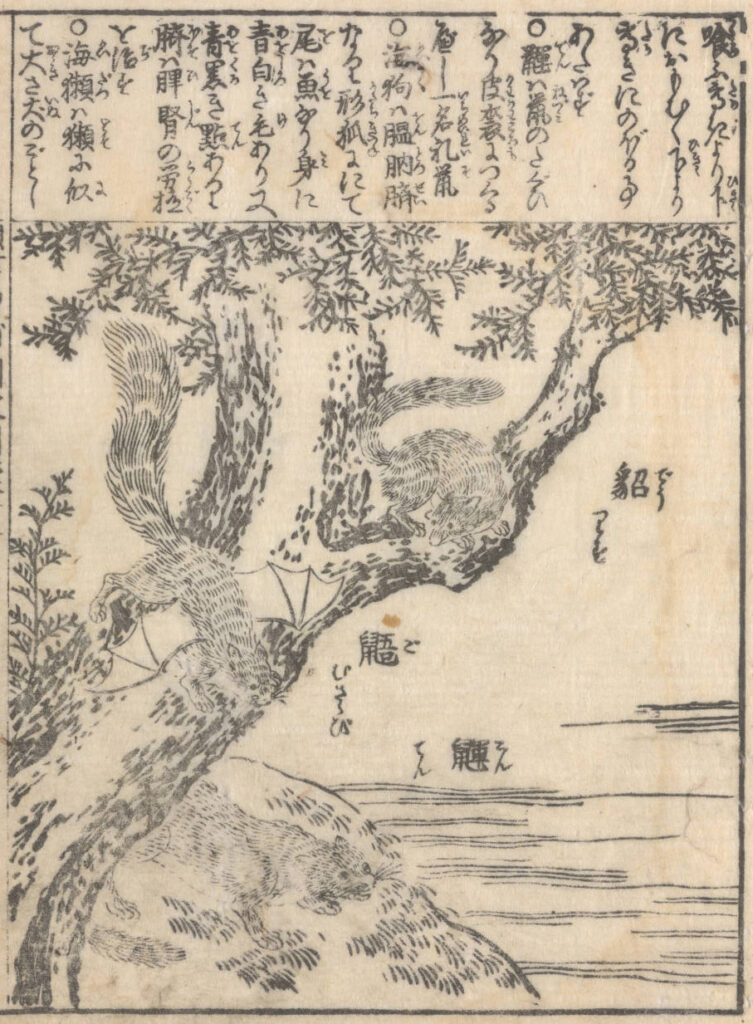
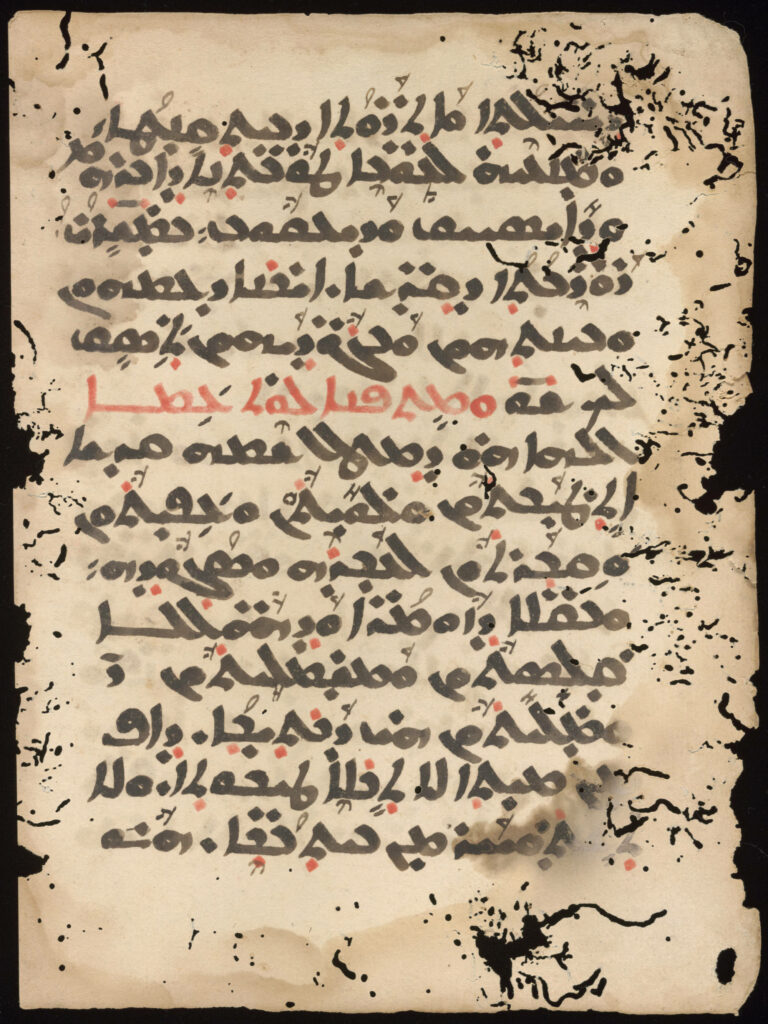
A set of pages from works with origins in North Africa, the Middle East, Southeast Asia, China, and Japan is now available to researchers online. The original works, dating from the 15th through 19th centuries, were dismantled and sold as individual “leaves” by the Society of Foliophiles in 1928. Removed from their original contexts and cultures, the pages–many of which contain sacred texts–lack authoritative identifying and descriptive information. Our hope is that digitization will facilitate discovery and insights related to their provenance and significance. Specimens include palm leaf manuscripts from Myanmar and Sri Lanka, an illustration from a children’s book printed in Japan, and gold-illuminated Persian, Arabic, and Sanskrit texts. Learn more about the digitization process and special techniques used to capture these artifacts in a blog post by Digital Initiatives Student Assistant, Maggie Bennink.
Botanical watercolor sketchbook (1904 )
Newly added to the Libraries’ digital collections, this sketchbook features delicate watercolor renderings of plants observed in nature. Created in England between 1904 and 1932, the volume is signed throughout with the initials A.R. and C.R.. Our research has led to the likely identification of C.R. as Clara Reynolds who studied art and lived at one of the locations referenced in the sketchbook. Other details of its provenance remain a mystery. Stay tuned for a forthcoming blog post by the student assistant who digitized, researched, and transcribed this enchanting artifact!
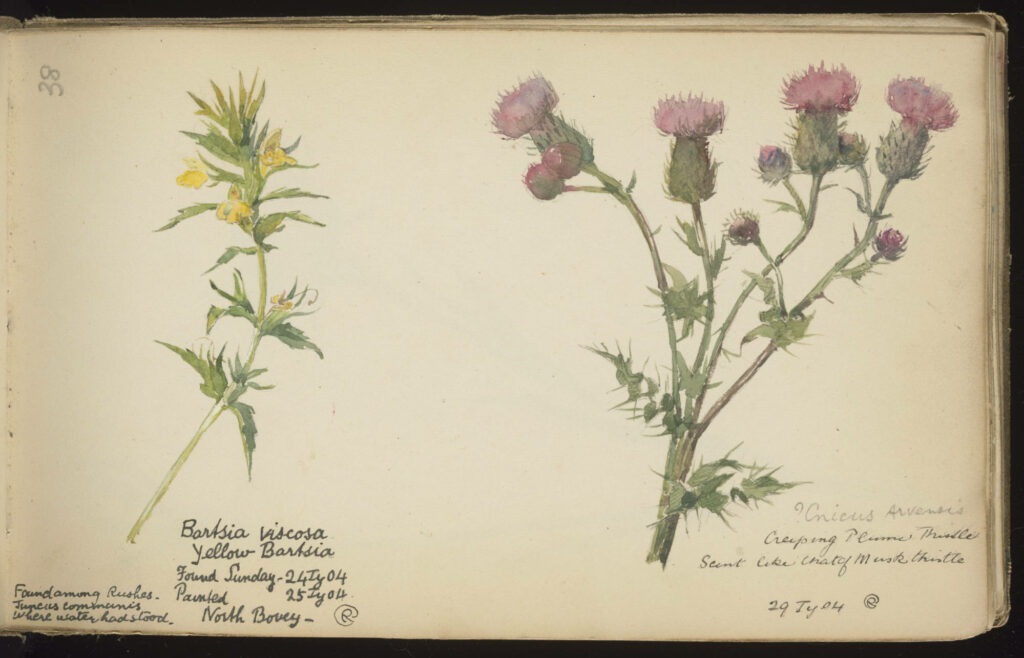
Documentary Photography Archive
Lloyd Moore Athens County Photos
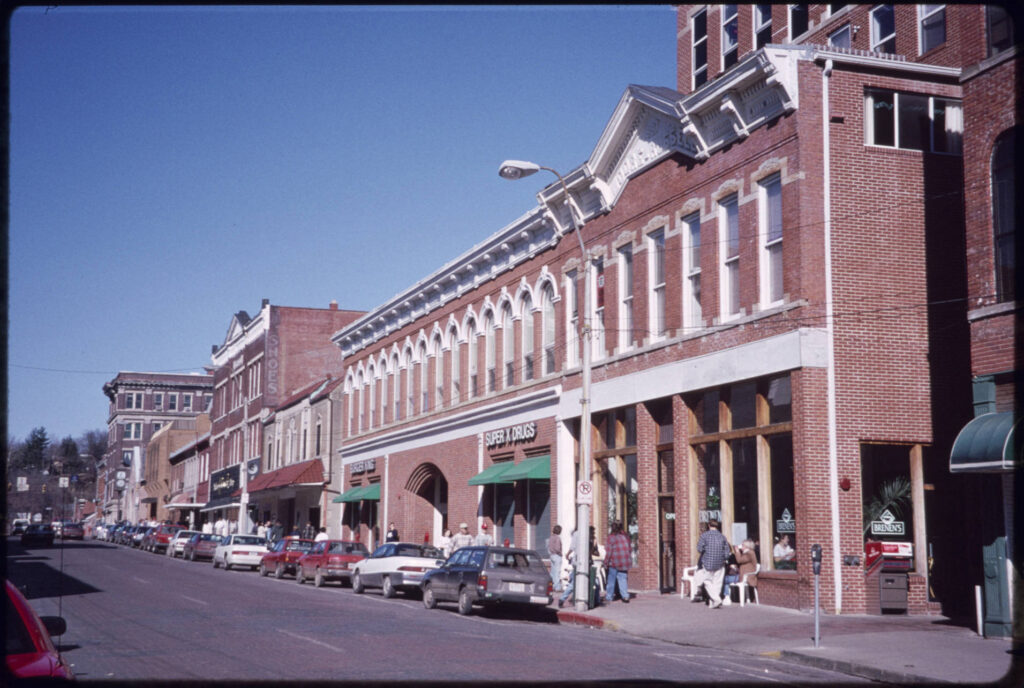
More than 150 photos documenting Athens County in the 1990s have been added to the Lloyd Moore digital collection. Moore was an amateur photographer and lawyer from Southeast Ohio who relocated to Athens upon retirement. His images fill an important historical gap in the area’s photographic record. They include glimpses of local businesses such as White’s Mill, Big Chimney Baking Company, Glasshouse Works, and The Coffee Cup diner in Nelsonville. Moore also captured numerous views of Strouds Run State Park and events ranging from the Athens Farmers Market to a baptism at Dow Lake.
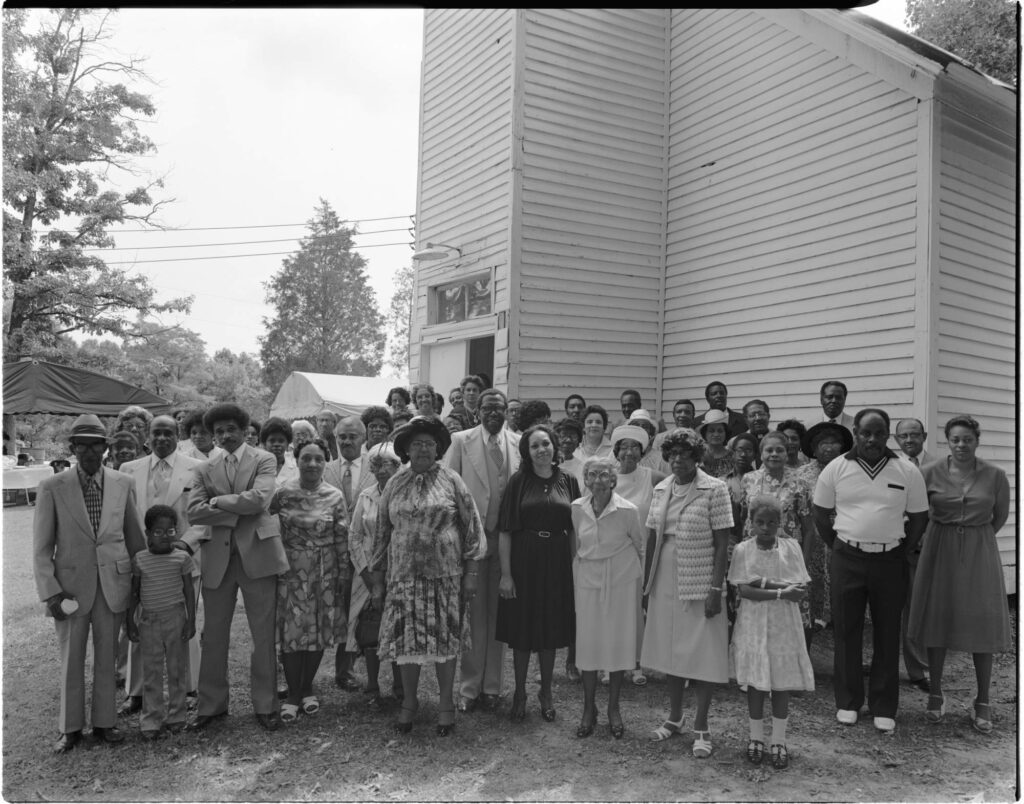

Another important addition to the Lloyd Moore digital collection highlights Macedonia Missionary Baptist Church in Burlington, Ohio which was the first Black Church in Ohio, and is the state’s only antebellum Black Church still standing today. Centered within the Macedonia Free Black Settlement, the church structure was built in 1849 and is recognized as a culturally significant landmark. The church is currently being restored with plans to reopen as a community and education center in fall 2024. Moore visited the site and captured these images of the building and congregation in 1979.
